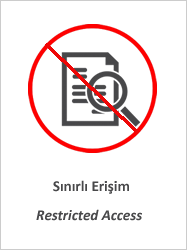Olfactory Cleft Opacification in COVID-19 Related Smell Loss: CT Findings and Correlation With Objective Testing
Abstract
Objectives: Besides the common symptoms of the coronavirus disease 2019 (COVID-19) including fever, shortness of breath, and cough, a “sudden loss of smell” has recently been added as a diagnostic symptom. The relationship between paranasal sinus computed tomography (PNS CT) and sudden loss of smell in COVID-19 was examined. Materials and Methods: Two groups were selected for the study, the COVID-19 and the control groups. The control group consisted of 40 patients who applied to our clinic with headache and therefore underwent PNS CT. The other group consisted of 40 patients with COVID-19 who were diagnosed with sudden loss of smell with the Connecticut Chemosensory Clinical Research Center (CCCRC) olfactory test. Clinical and demographic characteristics, tomography results, and olfactory test scores of patients with COVID-19 loss of smell and control group patients were recorded. The relationship between CT changes in the olfactory cleft and the degree of loss of smell was evaluated. The “Opacification in the olfactory cleft” was accepted as a positive CT finding. Results: Comparison of patients with COVID-19 who had a loss of smell and the control group indicated that a significant difference was observed in terms of CT findings (P =.022). When we evaluated the paranasal CTs obtained from our patients with loss of smell, the CT of 13 patients showed pathological findings (P <.05). As the COVID-19 progressed (pneumonia and respiratory failure), the degree of loss of smell increased (P <.05). A statistically significant relationship was found between the CCCRC score and the presence of PNS CT findings (P =.0012). Conclusion: The PNS CT findings are significant in patients with COVID-19 with a loss of smell and were significantly associated with the degree of loss of smell. In patients with olfactory loss due to COVID-19, PNS CT can help in diagnosis. However, for this imaging to be diagnostic, a larger patient series is needed. © The Author(s) 2021.
















